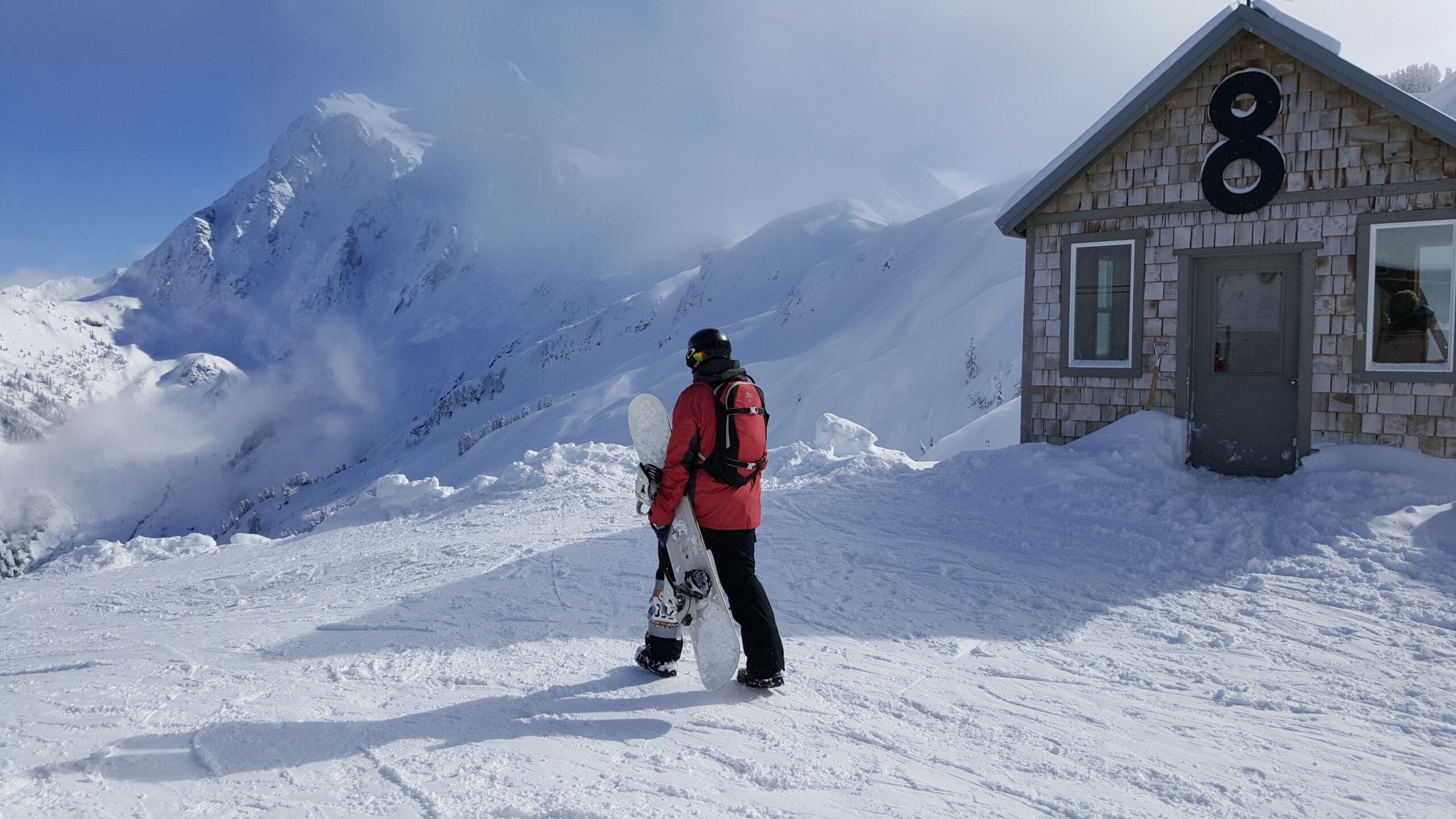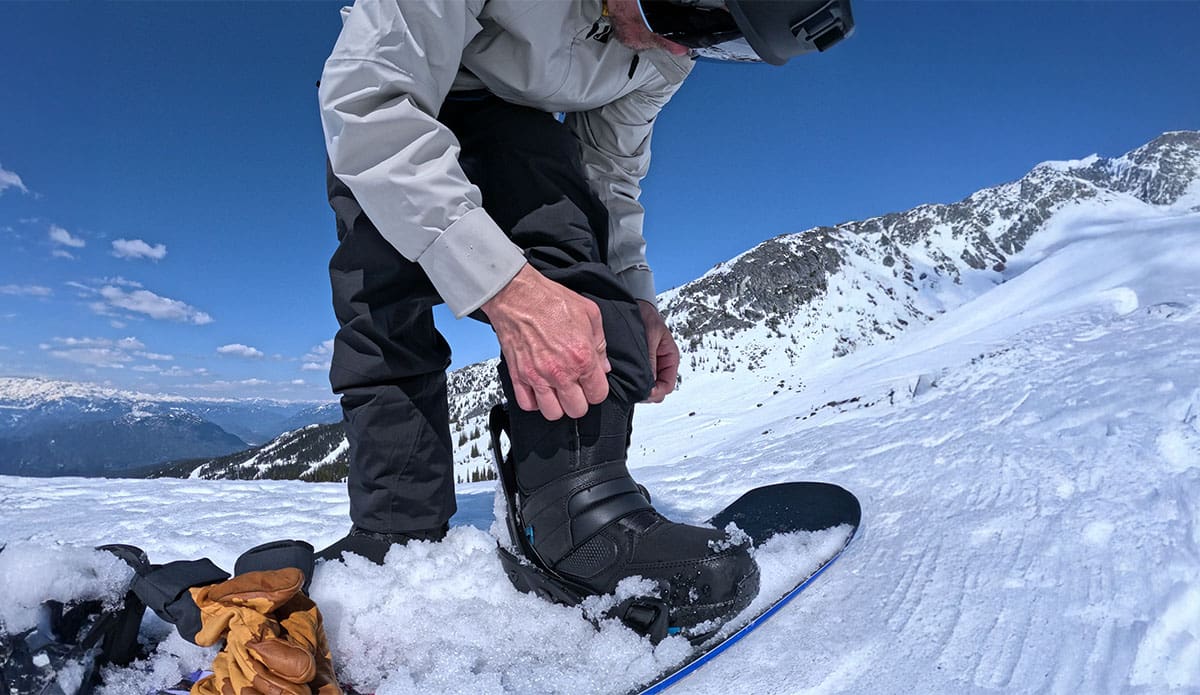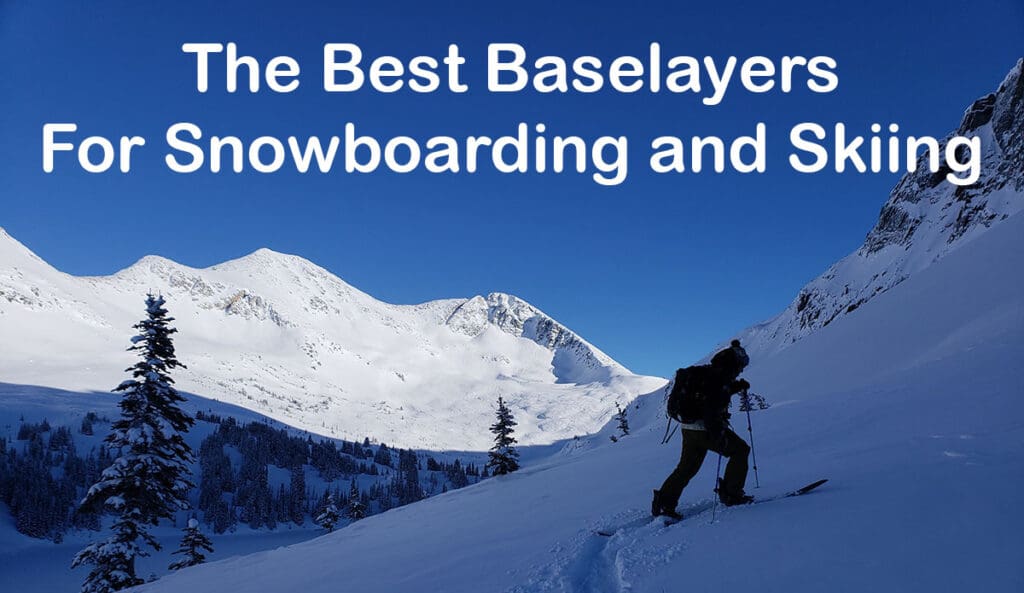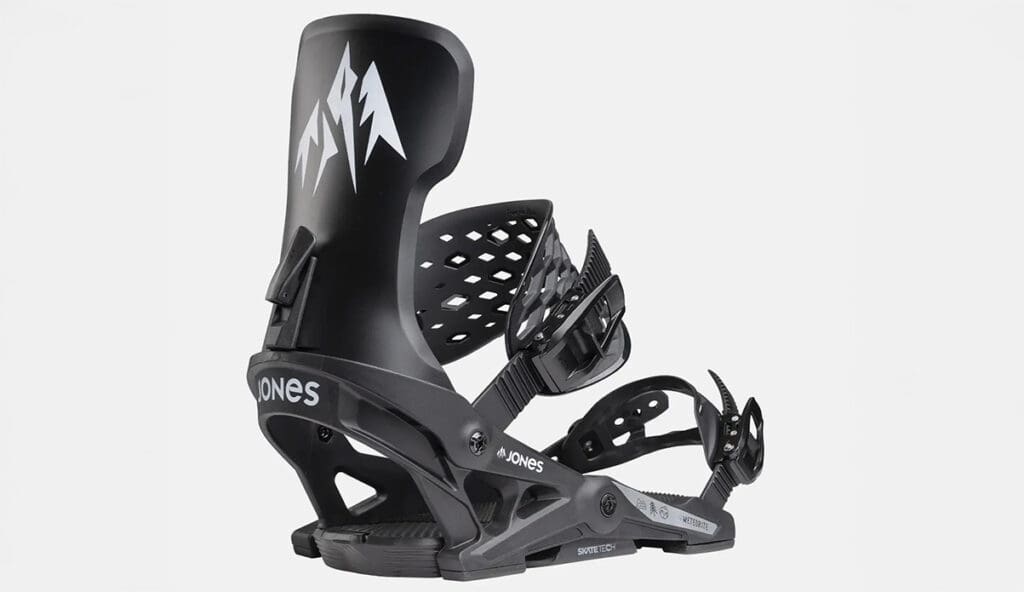A good pair of sunglasses will be used far more often than goggles when in the backcountry. This is not only due to the fact that you’ll spend much more time skinning up than sliding down, but with a good pair of glasses you may forgo wearing goggles altogether. You certainly don’t want to be wearing goggles while going up, as any pair of goggles will almost certainly fog up while skinning up, making them useless when you need them most. This is of course due to many different factors such as the weather and snow conditions, but if you’re like us, the odds are you’ll be wearing sunglasses more often than not in the backcountry.
If you just limit your options to sunglasses only marketed for backcountry ski touring or splitboarding, the selection is relatively slim compared to what’s out there. So, we’ve included several pairs of our favorite sunglasses that maybe aren’t directly made for touring, but still work great all the same.
Our Favorite Sunglasses for Backcountry Touring
Best All-Around Sunglasses for Backcountry Skiing and Splitboarding: Zeal Selkirk
Best Budget Sunglasses For Touring: Tifosi Moab
Best Glacier Glasses: Vallon Heron Glacier
Best Lightweight Sunglasses: Adidas Dunamis Pro
Best All-Around Sunglasses For Touring: Zeal Selkirk
Weight: 34g
Lens: Ellume
Features: Polarized lens, removable side shields
Materials: 47% Bioresin, plastic
Pros: Great visibility in both sun and cloud, good year-round style
Cons: Removable pieces can easily get lost
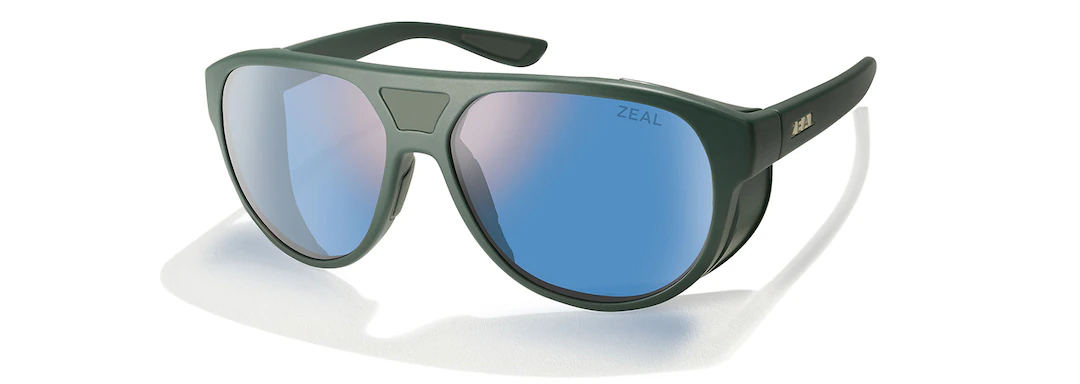
Those who have been to the Selkirk range probably don’t tell you about it, it’s that good. I’m not one to a. dish out secrets online to strangers (maybe periodically to fellow members) or b. take any weight in a product name, but this time it’s different. The Selkirk range does hit a soft spot in this backcountry lover’s heart. That was enough for me to take notice and try the Selkirk Glacier Glasses, but once I tested them for a bit, I found them to be enjoyable both in the vision it provides and the comfort on my face.
The plant-based Z-Resin frames really are something unique. The smooth matte finish feels good against the skin and in no way feels cheap. They have just enough flex to roll with the punches. Lens-wise, they did an amazing job. I tried the Horizon Blue version, and it provided excellent clarity in both full sun and cloudy conditions. With such a wide field of view, I find myself digging out the goggles less and less each session I wear these.
The only downside is the removable pieces are a big small and since they don’t have a dedicated pocket or case, have the potential to get easily lost. But they will come in handy when you need it. Since that won’t be all the time, it’s nice to have it easily removable for looking stylish around town and the rest of the year, giving these glasses much more utility than when on snow.
You also don’t really want to be topping out high speeds on the downhill for these. If you like to turn and burn you’ll want to swap goggles out, but that’s probably the case anyway. But they don’t have a snug fit, so chances are if you take a tumble, they will go flying.

Best Budget Sunglasses For Touring: Tifosi Moab
Weight: 32g
Lens: Photochromic or Interchangable
Features: Interchangeable lenses
Materials: TR90 frame, plastic lens
Pros: Good fit, aerodynamic
Cons: Frame can break when changing lenses in the cold
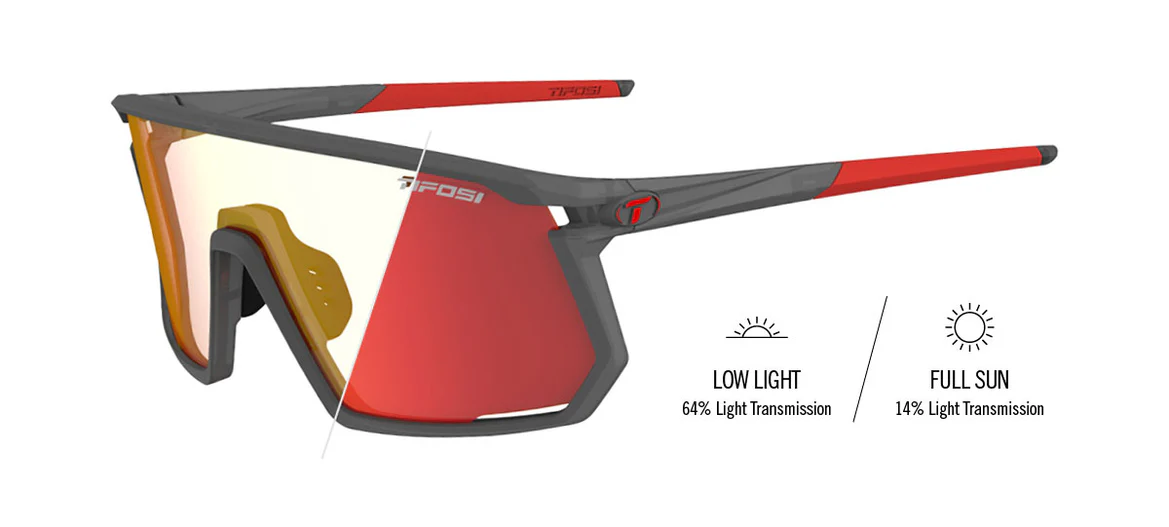
Tifosi has a reputation for making quality frames for a pretty reasonable price. The Moab is designed as a cycling glass, but performs well in the snow. The glasses give good wraparound protection, is lightweight, and either comes with interchangeable lenses or a photochromic version that works well in a variety of conditions except full sun on snow. The minimum VLT is 14%, which is pretty good, but still not the 6% you’d find in Vallon’s glacier glasses or the 7% minimum on the Pursuits. But that said, for the price it’s pretty hard to find a pair of sunglasses with good coverage, can work in a range of conditions, and still protects your face with minimal frog for the ride down.
If you opt for the triple lens version, just be sure to use a bit of finesse. Someone broke the frame when changing lenses, so you do have to be mindful that with the lower price is a lack of more premium materials. But for some, the sub-$80 price tag is well worth it. Just be sure to remember that when it’s really cold out, to use caution if you plan on changing lenses in the field.
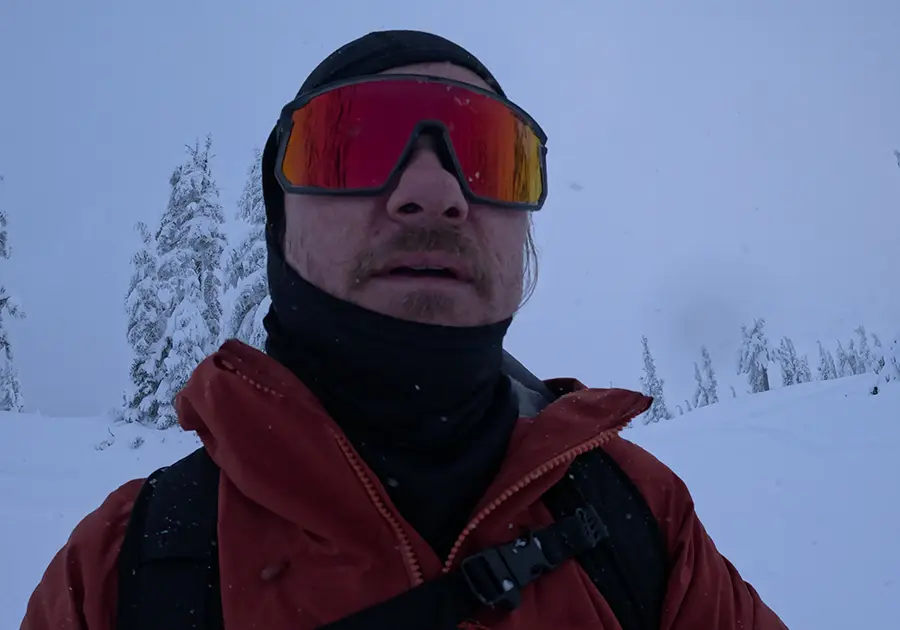
Best Glacier Glasses: Vallon Heron Glacier
Weight: 25g
Lens: Reflective plastic
Features: Reflective coating, ear hooks
Materials: TR90 Frame, Leather sides, Plastic lens
Pros: A variety of color options to suit your style
Cons: Looks a bit silly when not on the mountain
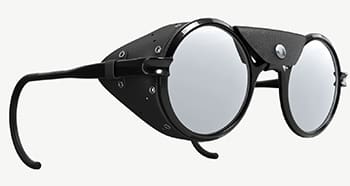
What’s old is new, and the old style mountaineering glasses from a century ago are back in style. But Vallon, a company out of Europe, has gotten some investment dollars behind them and now are pumping out new versions of this classic glacier glasses look. While the glasses look like those of yesteryear, the TR90 frame won’t freeze up like the old metal styles. With flexible ear hooks, they won’t fall off, either.
While the ultra-low 6% VLT does the job well on glaciers in the sun, the reality is that these glasses have one use. They serve that use well, but I wouldnt get these glasses as the only pair you need. But for ultimate sun protection out in the glaring snow and ice, this is a great option. Speaking of options, Vallon offers a whole host of different colors to suit any style you’re going for, from green to yellow to red, and more. They put a whole new spin on a classic look, while still making sure there isn’t any light getting in to cause you issues.
Best Lightweight Glasses: Adidas Dunamis Pro
Weight: 27g
Lens: Polycarbonate
Features: Wraparound, lightweight
Materials: Plastic
Pros: Great coverage, lightweight
Cons: Feels a bit fragile
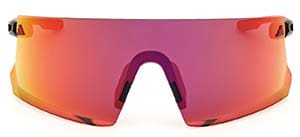
Adidas eyewear isn’t the type to be sold in your average ski or snowboard shop, but the engineering doesn’t lie. A brand more known to cyclists and runners makes some excellent shades that translate well to the mountain environment. With a minimalist, frameless style, they weigh in at less than an ounce, offering a hardly-noticeable feel while still providing ample coverage on the face.
Being that Adidas had cyclists in mind, the glasses actually offer some aerodynamic engineering that mimics a spoiler, making them remarkably stable for the ride down and doing a decent job of keeping wind out of the eyes. If there was one critique on these glasses it would be that the lenses aren’t interchangeable or photochromic, so you’re stuck with what you’ve got in variable light conditions. But for days when the light is consistent and you want something with a barely-there feel, these glasses were a solid pick for our favorite lightweight pair.
Smith Pursuit: Photochromic Futuristic Style
Weight: 41g
Lens: ChromaPop Photochromic
Features: Removable side shields, nosepiece, straps
Materials: Plastic
Pros: Huge coverage, big range in VLT
Cons: Can fog up without proper ventilation
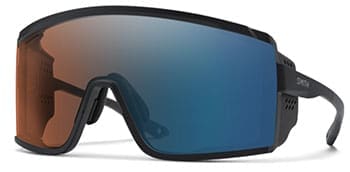
The Pursuit is legendary ski mountaineer Cody Townsend’s pet project, as he sought out to develop a pair of sunglasses that you could use in a variety of conditions, and still be fun to wear for the ride down. The frame is as close to goggles you can get without being actual goggles, and even come with a retainer strap if you aren’t a fan of switching out on transitions.
Thanks to the photochromic lens, this glasses/goggles hybrid spent a lot of time on my face without feeling like I was missing out on seeing anything. The ChromaPop lens tech is no gimmick, instead filtering out certain wavelengths of light that help provide extra definition where otherwise it might be more difficult. Everything felt much more vivid while looking through them, from bright sun to cloudy periods, and even when snowing.
I did find that the glasses would fog up when grunting uphill. Although the glasses are large, ventilation was an issue, and the fog would form on the brow making it difficult to see when climbing in high humidity. Since there is an inner film, the glasses aren’t easy to wipe off. So for that reason it wasn’t a top pick, although if someone can solve this issue then everything else about them was worth having in the bag.
How To Choose The Right Backcountry Sunglasses
Sunglasses made for ski touring have a few requirements that may not be so important in other uses, yet could be the difference between making or breaking your day in the backcountry. Here are a few features that should be considered when picking up your next pair of touring glasses:
Style
There are a few different styles of sunglasses that suit backcountry touring:
Wraparound: Wraparound glasses have one uniform lens stretching from side to side to give maximum protection, second only to an actual pair of goggles with the added benefit of extra ventilation to prevent fogging up.
Traditional: These are your everyday glasses that will be great at blocking the sun, however can still let excess light creep in on the sides when you’re surrounded by snow that reflects light from all directions.
Glacier: Glacier glasses have extra protection on the sides to block light coming off of the snow. They work great for their intended use, however might work too well in low light situations or times when you’re not on an alpine face in the sun.
Weight: When you’re skinning up steep ascents or moving swiftly across a ridgeline, every gram sitting on your face counts. Opting for lightweight sunglasses (ideally below 40 grams) can help reduce fatigue and discomfort on long days. Heavier models might feel secure initially but can become a burden after extended use, especially when coupled with helmets or hats. You don’t want to be adjusting your glasses when you have more important things to deal with at any given moment when you need full attention to your surroundings.
Lens Interchangability
Conditions in the backcountry can change rapidly, so having sunglasses with interchangeable lenses is a game-changer. This feature allows you to swap out lenses based on light conditions, ensuring optimal visibility. For instance, darker lenses are ideal for bright, bluebird days, while lighter lenses or those with higher Visible Light Transmission (VLT) are better for low-light or cloudy conditions. If versatility is key for you, seek sunglasses with quick and easy lens-change systems, or lenses that are photochromic.
PhotoChromic Lenses
Some lenses have a fixed amount of light they filter out, and others (photochromic) adapt to the light conditions. The Tifosi Moab and Smith Pursuit both offer this type of lens from our list. It’s worth it to have in variable light conditions, especially when you don’t want to be switching out lenses every time a cloud passes overhead.
Side Protection
Side shields or wraparound designs offer crucial protection against peripheral light and wind, which can be intense when moving through snowy, exposed terrain. This feature can help prevent snow blindness, protect against harsh UV rays reflecting off the snow, and block wind that might dry out your eyes. Removable side shields add flexibility, allowing you to tailor your sunglasses for multi-use (e.g., town use versus alpine touring). Ultimately, removable side shields will help with style points when not needed, but can be a chore to switch over, as well as risky if you’re prone to losing small items. Then, if you don’t have them when you need them, you’ll regret taking them out. The sunglasses we mention here don’t have excessive fogging issues when installed, so removing side shields are more of a cosmetic choice rather than any functional benefit.
Visible Light Transmission (VLT) Percentage:
The VLT percentage indicates how much light passes through the lens. Sunglasses for snow and glacier travel generally have a low VLT percentage (between 5-15%), meaning they block out most light and protect your eyes from the intense reflection of the sun on snow. For mixed conditions or low-light days, a VLT range of 20-50% might be preferable. Photochromic lenses that automatically adjust their VLT based on light levels can be especially useful for ski touring, where conditions can shift from bright sun to overcast within minutes.
Fit and Comfort
A secure, comfortable fit is essential for extended wear. Sunglasses that dig into your temples or bridge of the nose can become painful over time, distracting you from the task at hand. Look for models with adjustable nose pads or temple arms to ensure a snug, personalized fit that won’t slip when you’re moving or sweating.
Durability
Backcountry gear takes a beating, so your sunglasses need to be up to the task. Look for materials like TR90 or high-quality polycarbonate for the frames, as these can withstand the cold, flex under pressure, and remain lightweight. The lenses should be scratch-resistant and impact-rated to handle potential drops or branches brushing by.
Anti-Fog and Ventilation
Fogging can be a real issue during high-output activities like touring, so it’s important to choose sunglasses with good ventilation or anti-fog coatings. Look for glasses with built-in vents or a frame design that allows air to circulate to prevent condensation from obscuring your vision on strenuous ascents.
Return to Top Picks | Return to How To Choose The Right Sunglasses

